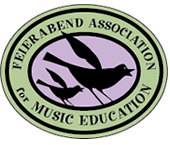by Miriam Capellan (she/her)
[email protected]
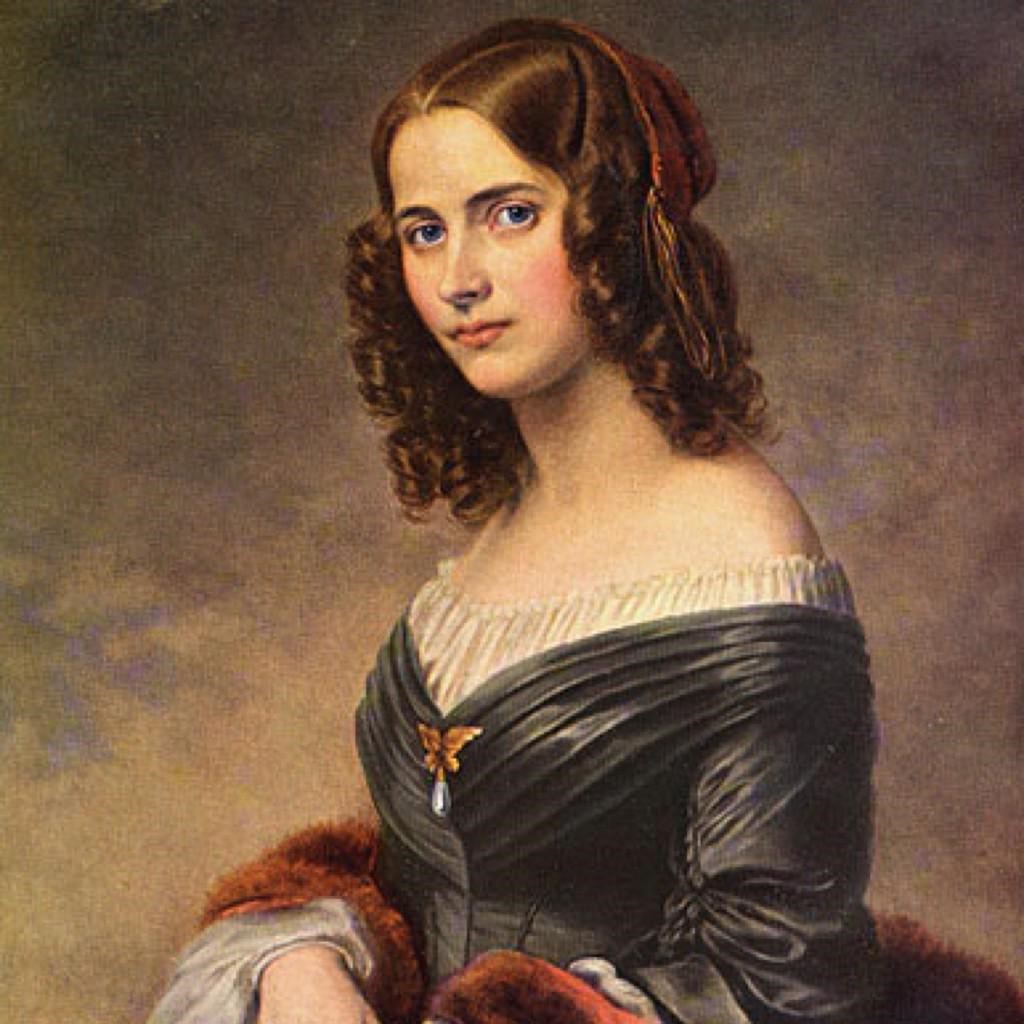 Fanny Mendelssohn, Romantic composer and sister to Felix wrote her own wedding music, staying up past midnight to finish the night before her big day. Why? Felix had promised to write the music but unexpectedly fell out of a carriage and couldn’t make the wedding. Italian composer Barbara Strozzi had more music in print than any other composer in the 17th century. UK composer Errollyn Wallen is the recipient of the prestigious CBE title (Commander of the Most Excellent Order of the British Empire) and lives in an actual lighthouse in Scotland. I hadn’t heard any of these stories until my late 30’s when I became hooked on the untold stories of women creating music past and present. I wondered, how could I not have learned any of this in music school? If I had learned about some of these women, how would that have changed the career trajectories of the women in my music program? How might learning about music through gender-balanced content affect the students I teach today?
Fanny Mendelssohn, Romantic composer and sister to Felix wrote her own wedding music, staying up past midnight to finish the night before her big day. Why? Felix had promised to write the music but unexpectedly fell out of a carriage and couldn’t make the wedding. Italian composer Barbara Strozzi had more music in print than any other composer in the 17th century. UK composer Errollyn Wallen is the recipient of the prestigious CBE title (Commander of the Most Excellent Order of the British Empire) and lives in an actual lighthouse in Scotland. I hadn’t heard any of these stories until my late 30’s when I became hooked on the untold stories of women creating music past and present. I wondered, how could I not have learned any of this in music school? If I had learned about some of these women, how would that have changed the career trajectories of the women in my music program? How might learning about music through gender-balanced content affect the students I teach today?
Mirrors, Windows, and Sliding Glass Doors
First coined by Dr. Rudine Sims Bishop, this concept describes the ways in which students can interact with literature in a culturally responsive setting. In other words, students need to see themselves represented in literature, and they need to see people and experiences that are different from them. Sometimes these experiences will be like looking in a mirror, other times the learner looks in to observe, and in other moments it may be appropriate for them to walk through the sliding glass doors of imagination and empathize with the experience. Our music rooms, like our school libraries, also need to offer students all three opportunities for exploration. As they interact with a piece of music, carefully chosen by their teacher, the student may have the opportunity to expand their imagination, tap into a budding sense of empathy, or seek affirmation of their culture and identity.
Who is a Composer? What do they look like?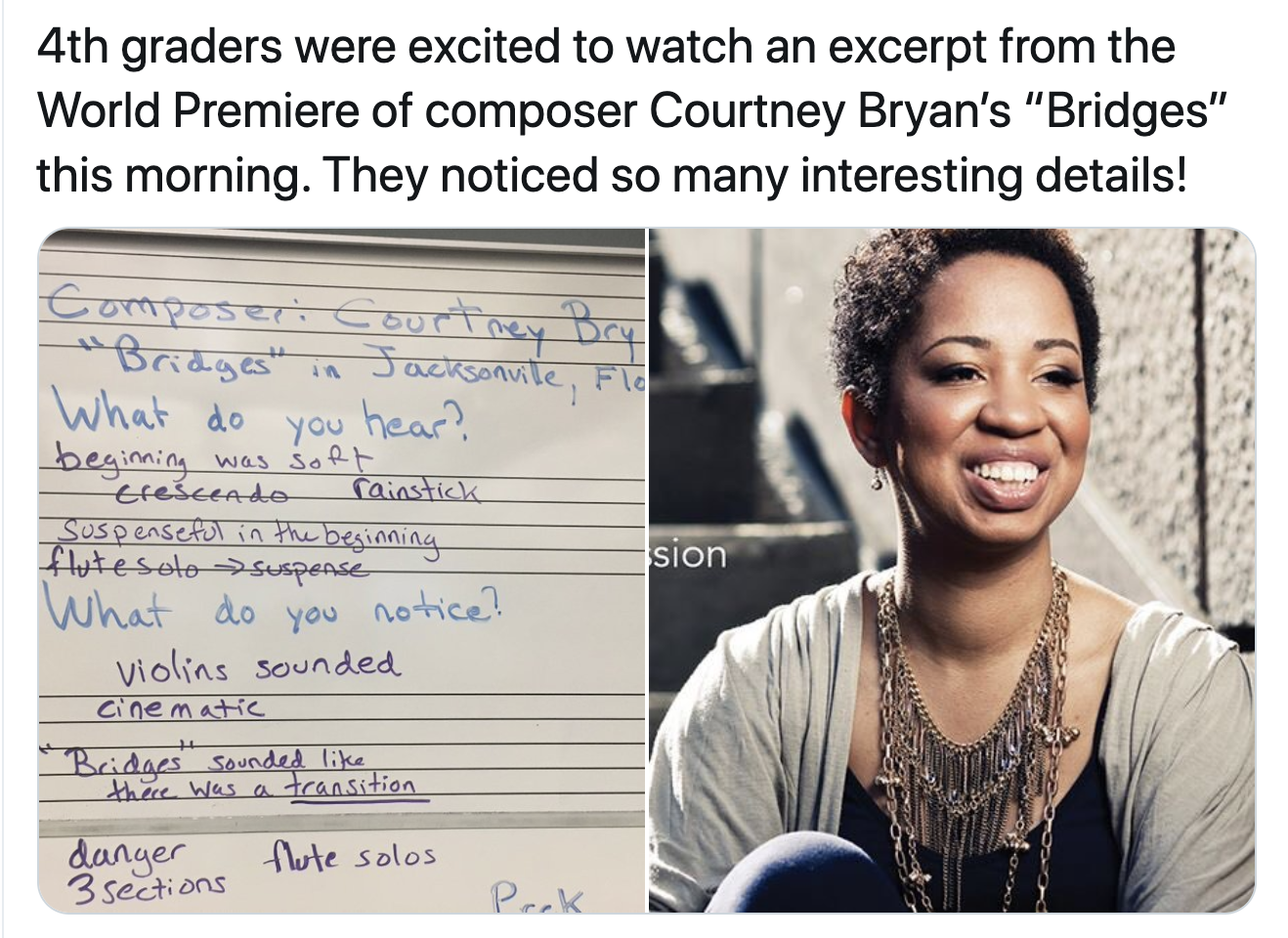
As students begin to understand the role of the composer, what tools can we give them that will help them better imagine themselves in the role of “music creator”? How can we provide them with experiences in the Feierabend-inspired classroom that will inspire each and every student to see themselves as a potential music creator? Keeping Dr. Bishop’s mirrors, windows, and sliding glass doors concept in mind, our listening repertoire should not only be gender-balanced but should also strive to counteract the Eurocentric male-dominated image of composers that have been so prevalent in school music programs. This means centering works of Black, Brown, and Indigenous (or BBIP) women and gender-expansive composers/creators in our listening libraries.
Creative Movement
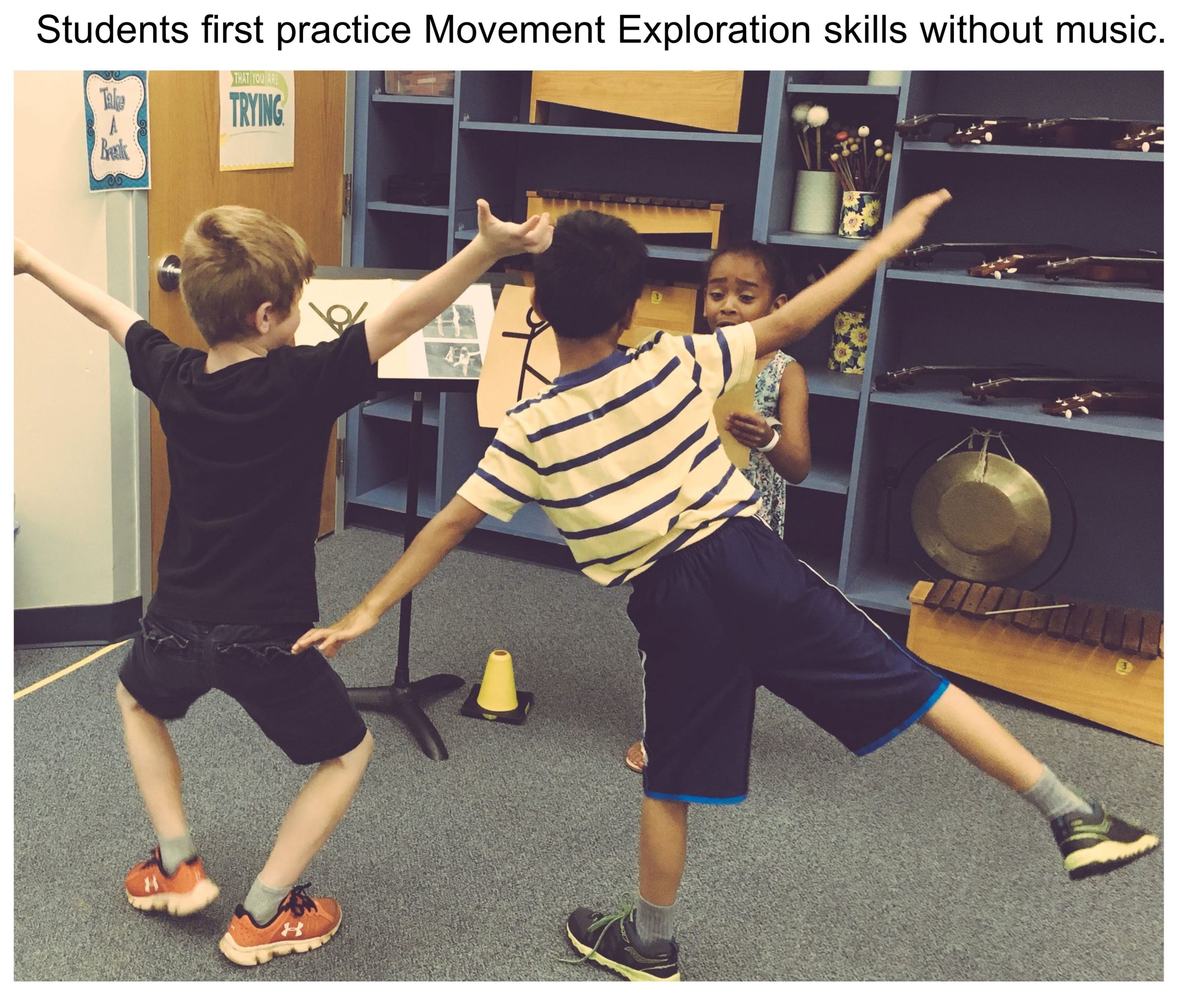 One of the aspects of the Feierabend approach that really drew me in was Jean Kahan’s wonderful movement exploration content. Incorporating the works of women and gender-expansive composers into my lessons, the movement exploration framework gave me a multitude of pathways to success. The focus on movement concept mastery before movement response to music was crucial for me. We practiced painting brushstrokes of varying lengths and intensity before pairing the movement with Errollyn Wallen’s “Concerto Grosso III”. Students practiced the skill of being human sculptors and sculptures long before we added music: Chen Yi’s “Flowing Stream” from a set of Chinese Folksongs. There are so many complex and dynamic music creations by women and gender-expansive composers that, really, the sky’s the limit when creating inclusive experiences in movement exploration.
One of the aspects of the Feierabend approach that really drew me in was Jean Kahan’s wonderful movement exploration content. Incorporating the works of women and gender-expansive composers into my lessons, the movement exploration framework gave me a multitude of pathways to success. The focus on movement concept mastery before movement response to music was crucial for me. We practiced painting brushstrokes of varying lengths and intensity before pairing the movement with Errollyn Wallen’s “Concerto Grosso III”. Students practiced the skill of being human sculptors and sculptures long before we added music: Chen Yi’s “Flowing Stream” from a set of Chinese Folksongs. There are so many complex and dynamic music creations by women and gender-expansive composers that, really, the sky’s the limit when creating inclusive experiences in movement exploration.
Keeping the Beat
 Like many Feierabend practitioners, I love to invite students to be musical, from the moment they enter my room. “Keeping the beat” activities offer the perfect way for them to do this. It also gives me an opportunity to provide student leadership and more mirrors, windows, and sliding glass doors through the music I choose. One of my students’ favorite beat keeping selections is Rhiannon Giddens “Mouth Music”. It incorporates beat-boxing with “diddling” and has a gradual tempo shift all the way from 110 to 148 bpm. The end is so fast and silly that we end up just wiggling and laughing until everyone falls on the floor. I highly recommend it.
Like many Feierabend practitioners, I love to invite students to be musical, from the moment they enter my room. “Keeping the beat” activities offer the perfect way for them to do this. It also gives me an opportunity to provide student leadership and more mirrors, windows, and sliding glass doors through the music I choose. One of my students’ favorite beat keeping selections is Rhiannon Giddens “Mouth Music”. It incorporates beat-boxing with “diddling” and has a gradual tempo shift all the way from 110 to 148 bpm. The end is so fast and silly that we end up just wiggling and laughing until everyone falls on the floor. I highly recommend it.
Conversational Solfege Rhythm Units
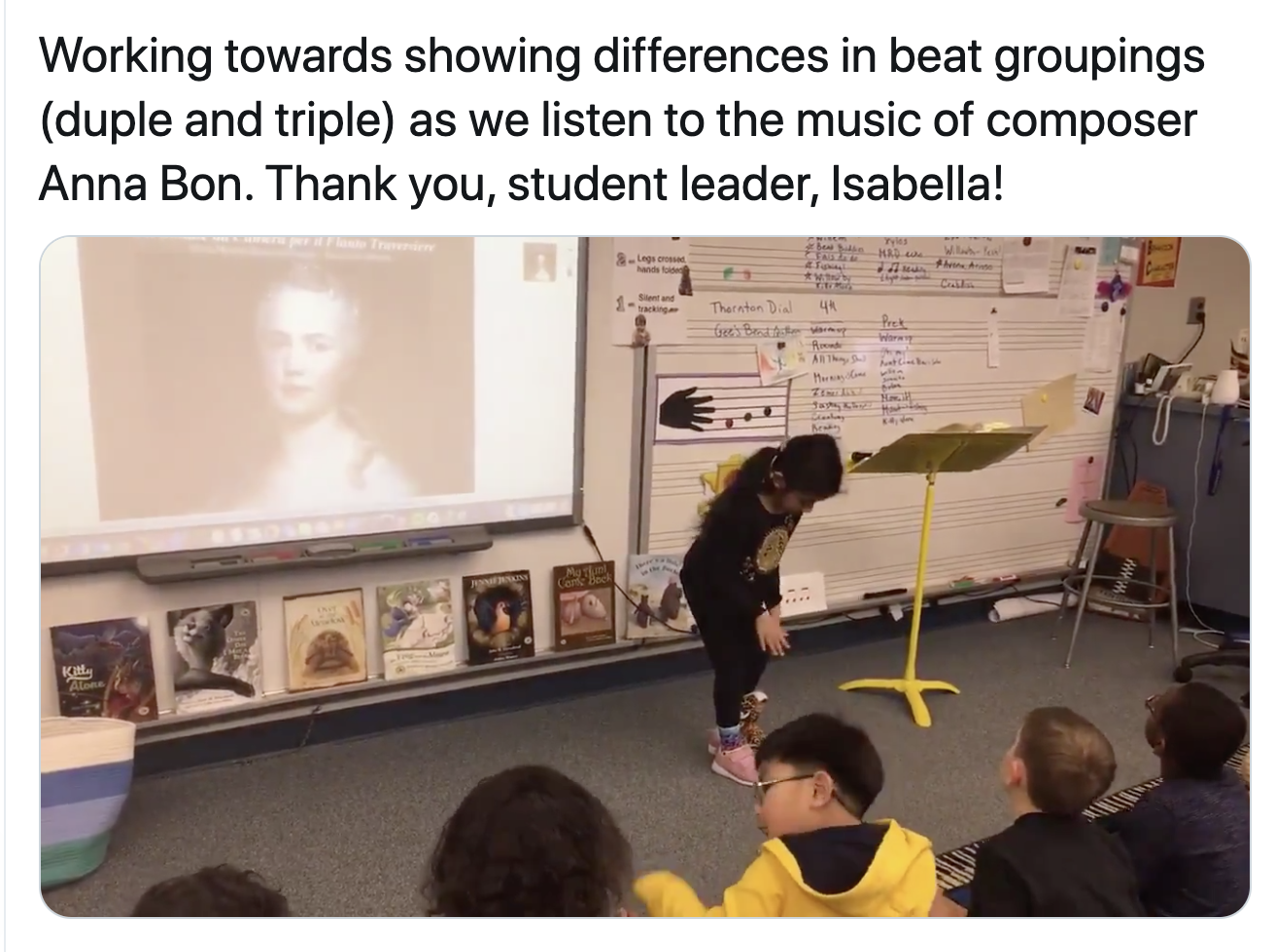 Sometimes finding just the right piece to accompany rhythm chanting and improvisation can be challenging. Luckily there is such a wealth of music created by women and gender-expansive artists that can fit the bill, spanning from the early middle ages to the present day. Caterina Assandra, a 16th-century Benedictine nun wrote some enchanting music (although we don’t have much of it). Incorrectly attributed to her teacher Benedetto Re for many years, her “Motetti a due & tre voci” is a perfect piece to accompany a slower tempo rhythm chant (or improvisation) in duple meter.
Sometimes finding just the right piece to accompany rhythm chanting and improvisation can be challenging. Luckily there is such a wealth of music created by women and gender-expansive artists that can fit the bill, spanning from the early middle ages to the present day. Caterina Assandra, a 16th-century Benedictine nun wrote some enchanting music (although we don’t have much of it). Incorrectly attributed to her teacher Benedetto Re for many years, her “Motetti a due & tre voci” is a perfect piece to accompany a slower tempo rhythm chant (or improvisation) in duple meter.
The “About” Part of the Lesson
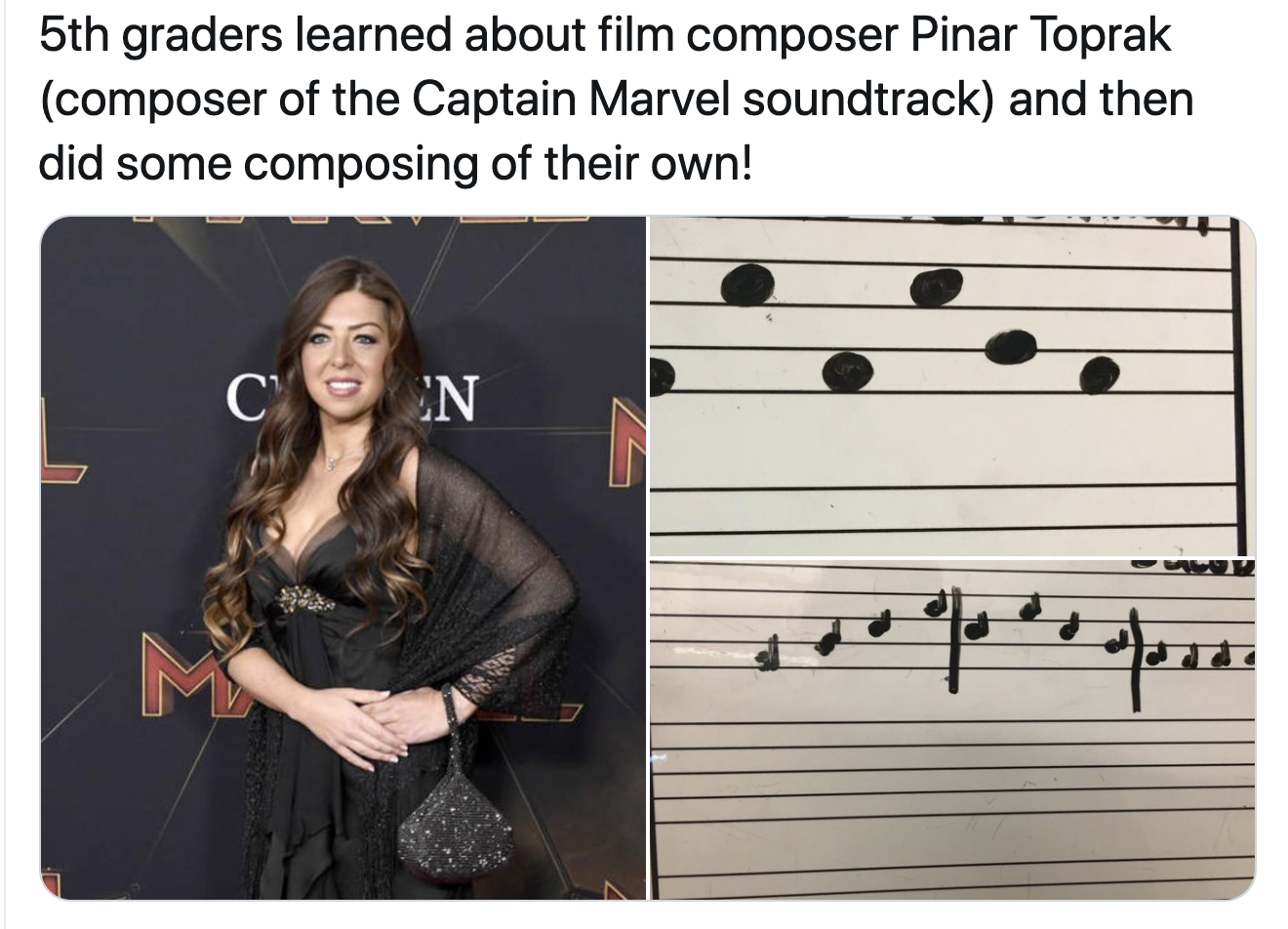 Older students enjoy having short silent listening moments and an opportunity to reflect as a group, often parsing out music vocabulary they can use to describe what they hear.
Older students enjoy having short silent listening moments and an opportunity to reflect as a group, often parsing out music vocabulary they can use to describe what they hear.
One day we might listen to an excerpt from Chicago Hip Hop artist Noname. Another time it might be Pinar Toprak’s “Captain Marvel” soundtrack or Fanny Mendelssohn’s seasonal “Das Jahr”. Once again, students have the opportunity to interact with a piece of music that is masterfully crafted and provides a mirror for those chronically underrepresented in music classrooms.
Additional resources to expand your listening library
Check out the following link for databases, playlists, and podcasts to help you build an outstanding gender-inclusive listening library that centers BBIP composers.
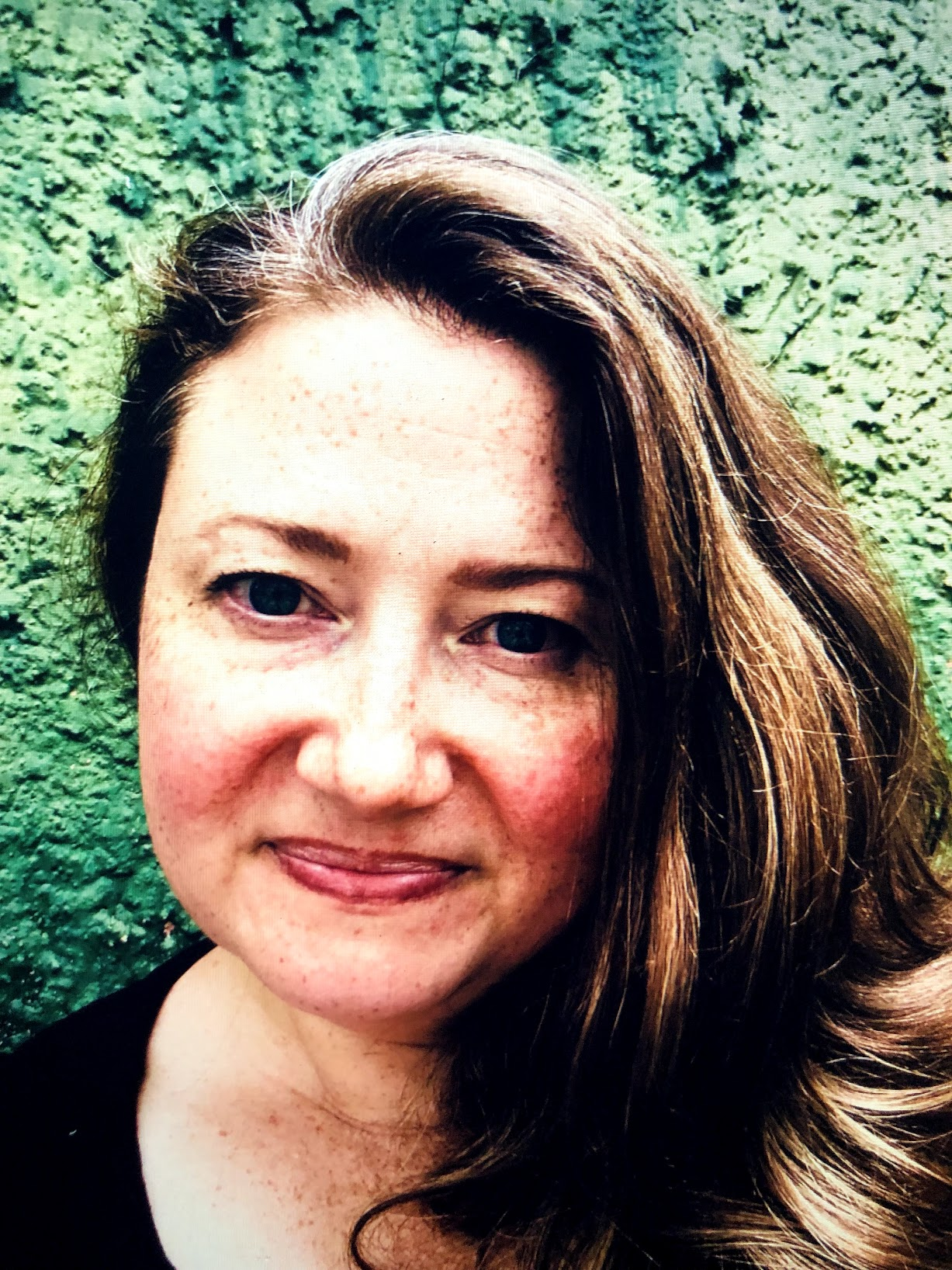 Miriam Capellan teaches PreK – 5th grade vocal /general music in Arlington, VA. She loves figs, reading with her three children and contra-dancing.
Miriam Capellan teaches PreK – 5th grade vocal /general music in Arlington, VA. She loves figs, reading with her three children and contra-dancing.
Bibliography:
Beer, Anna. “These Women Composers Should Be Household Names Like Bach or Mozart.” Smithsonian.com, Smithsonian Institution, 17 Mar. 2016, www.smithsonianmag.com/arts-culture/these-women-composers-should-be-household-names-bach-or-mozart-180958464/.
Bishop, R. (1990). “Mirrors, Windows, and Sliding Glass Doors.” Ohio State University. Perspectives: Choosing and Using Books for the Classroom, 6(3).
Feierabend, J. M., & Kahan, J. (2004). The book of movement exploration: can you move like this? Chicago: Gia Publications.
Plylar, David. “Fanny Mendelssohn: A Pre-Hensel Tale.” Fanny Mendelssohn: A Pre-Hensel Tale | In The Muse: Performing Arts Blog, 28 Sept. 2015, blogs.loc.gov/music/2015/09/fanny-mendelssohn-a-pre-hensel-tale/.
Photo credit Elizabeth Leitzell (for the Courtney Bryan pic)
Photo credit Jesse Grant/Getty (for the Pinar Toprak pic)
